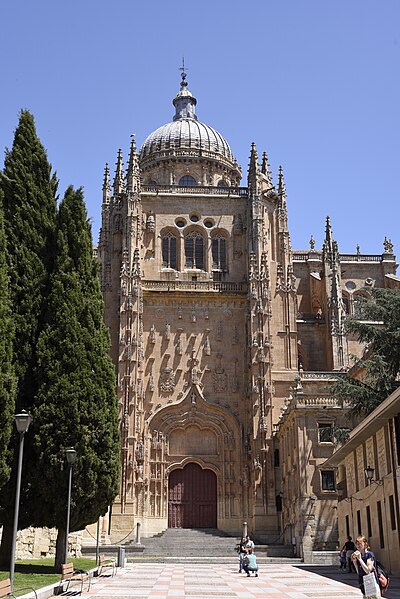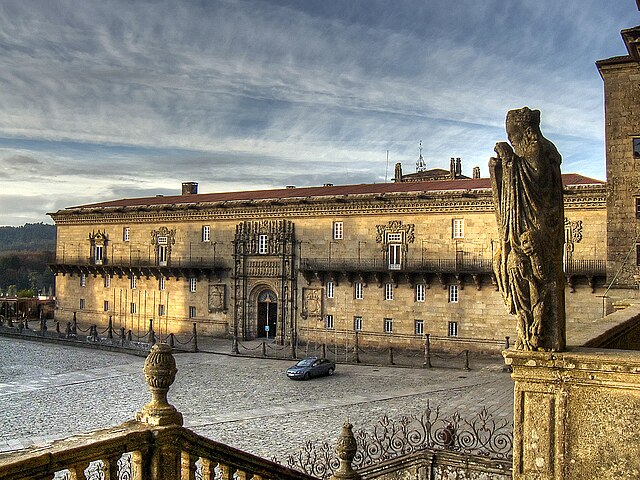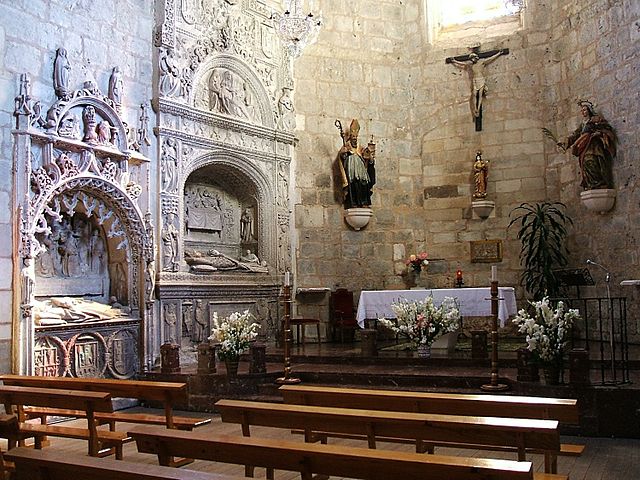Isabelline (architectural style)
The Isabelline style, also called the Isabelline Gothic, or Castilian late Gothic, was the dominant architectural style of the Crown of Castile during the reign of the Catholic Monarchs, Queen Isabella I of Castile and King Ferdinand II of Aragon in the late-15th century to early-16th century. The Frenchman Émile Bertaux named the style after Queen Isabella.
Facade of Iglesia conventual de San Pablo, Valladolid.
Facade of the Colegio de San Gregorio, Valladolid
Lower cloister of the Monastery of San Juan de los Reyes, Toledo
Royal Chapel of Granada
Plateresque, meaning "in the manner of a silversmith", was an artistic movement, especially architectural, developed in Spain and its territories, which appeared between the late Gothic and early Renaissance in the late 15th century, and spread over the next two centuries. It is a modification of Gothic spatial concepts and an eclectic blend of Mudéjar, Flamboyant Gothic and Lombard decorative components, as well as Renaissance elements of Tuscan origin.
New Cathedral of Salamanca (1513-1733) in the Plateresque made city of Salamanca, Castile and León, Spain
Hospital of the Catholic Monarchs (1501-1511), in Santiago de Compostela, Galicia, Spain
Altar plateresque of the Cistercian monastery of Santa María del Salvador, in Cañas, La Rioja, Spain
Plateresque tomb of the Saint Juan de Ortega, next to another tomb of late Gothic style, in the Convento de Santa Dorotea (15th century), in Burgos, Castile and León, Spain








